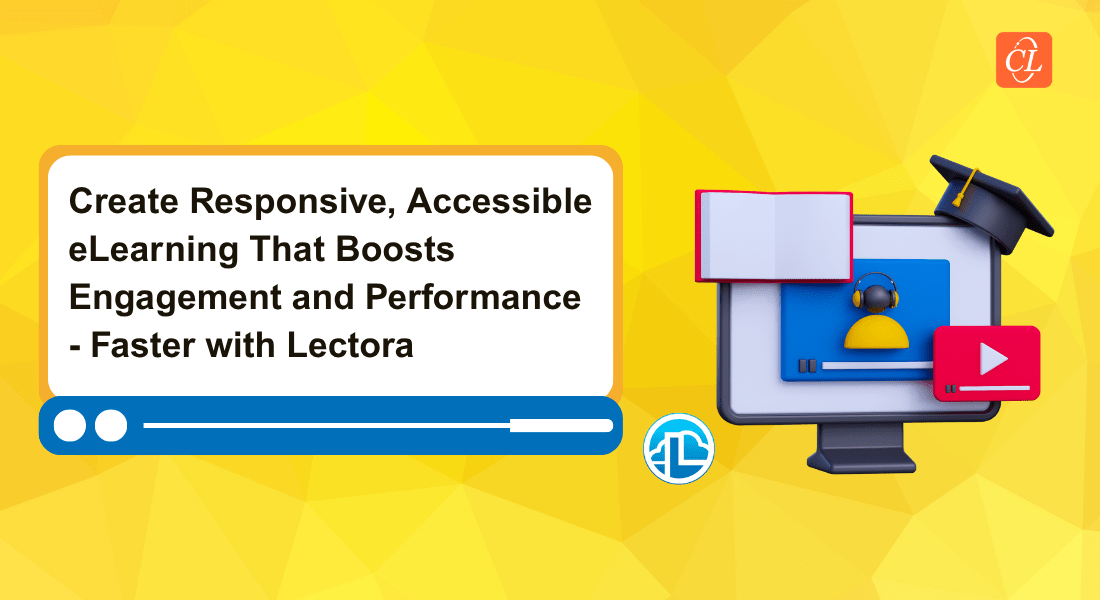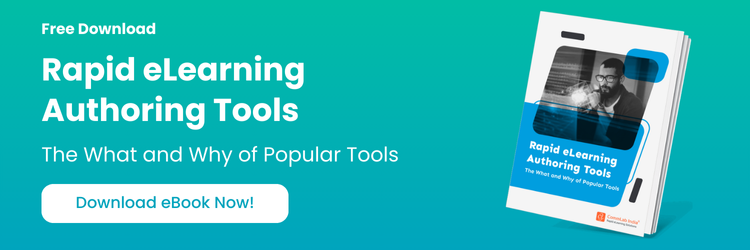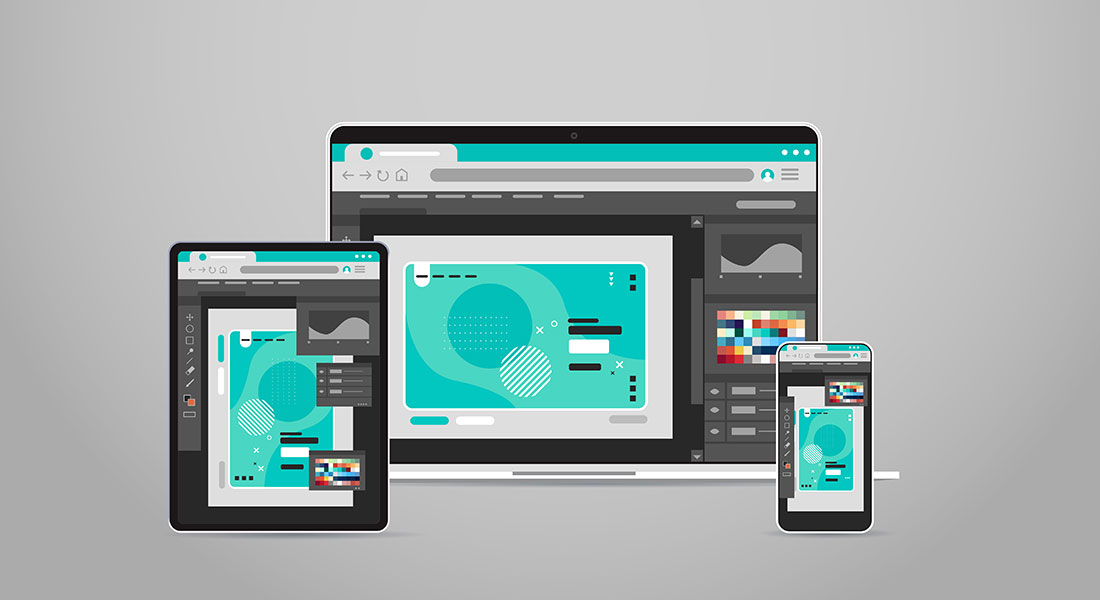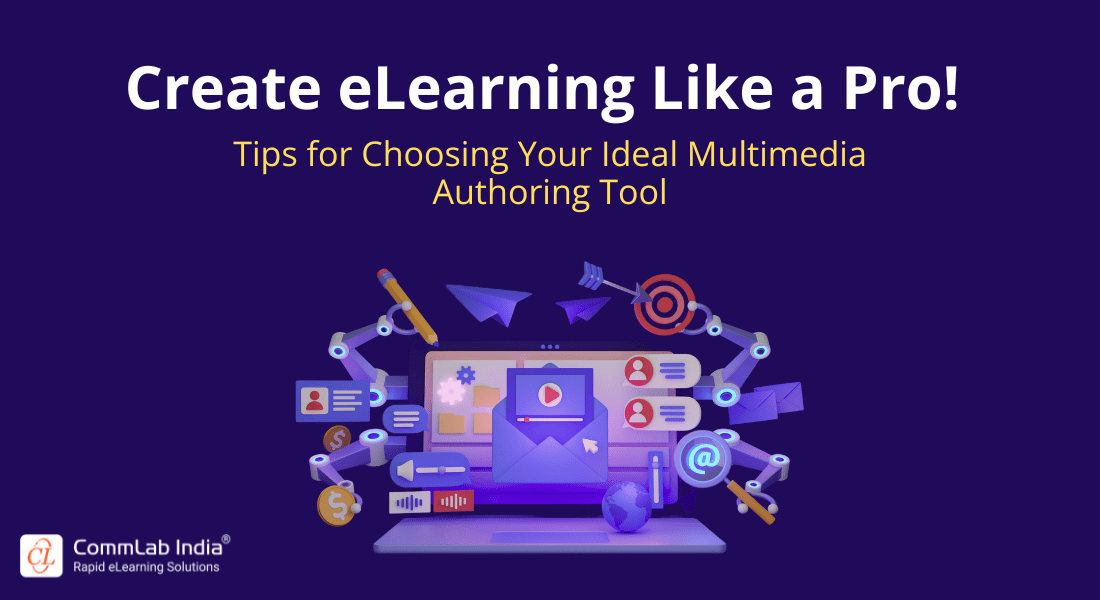In an era where learning is business-critical, the tools we use to build training matter more than ever. Instructional design is no longer just about delivering content, it's about crafting digital experiences that educate, engage, and evolve. This is where the Lectora suite changes the game.
Lectora isn't just a name in the crowded world of eLearning development software. It's a platform engineered for teams that want precision without complexity, innovation without compromise, and scale without sacrificing learner experience. Whether you're onboarding 10,000 employees or building compliance training for 10 departments, Lectora software equips you with the strategic edge to move fast and smart.
Let’s explore how Lectora moves beyond templates and timelines to become an ecosystem of possibilities for modern learning.
→ Download eBook Now: Rapid eLearning Authoring Tools
Table Of Content
- What is Lectora?
- What are the Features of Lectora?
- What are the Latest Updates of Lectora?
- What are the Benefits of Lectora?
- What are the Best Practices to Maximize Results with Lectora?
What is Lectora?
Lectora Inspire is a robust, enterprise-grade course authoring software designed to elevate how organizations create and deliver eLearning experiences. It empowers teams to build mobile-ready, standards-compliant, and instructionally sound digital learning faster and at scale.
Available in two formats Lectora Online (cloud-based for collaborative, distributed teams) and Lectora Desktop (locally installed with powerful offline capabilities) the platform offers flexibility without compromise.
It supports:
- SCORM, AICC, and xAPI publishing for seamless LMS integration
- Advanced interactivity through triggers, variables, and reusable design frameworks
- Fully responsive design to ensure compatibility across devices and screen sizes
- Built-in accessibility aligned with the latest WCAG 2.2 standards for inclusive learning
Trusted by industries ranging from healthcare and manufacturing to IT and finance, Lectora is not just an authoring tool it’s a strategic solution for delivering high-impact, future-ready eLearning.

What are the Features of Lectora?
Lectora is more than a design tool, it’s a complete eLearning development environment that supports instructional strategy, user engagement, and efficient workflows.
Key Features Include:
1. Modular Development (ModDev)
At the heart of Lectora’s innovation is its Modular Development framework-a ready-to-use library of:
- Instructional design templates
- Mobile-responsive themes
- Interactive wireframes
- Branded reusable components
- ModDev ensures faster development, reduced redundancy, and consistency across courses, regions, and teams.
2. Real-Time Interactivity
The new On Variable Change trigger simplifies the creation of adaptive learning experiences by allowing actions to fire automatically when a variable’s value changes. It eliminates the need for complex conditionals, making it easier to build responsive navigation, personalized feedback, and dynamic course flows all with minimal instructional design effort.
3. Media and Design Control
- Native Vimeo video support enables high-quality streaming
- SVG graphics keep visuals crisp on all devices
- Object alignment guides ensure clean, professional layouts
- PowerPoint import streamlines conversions without formatting loss
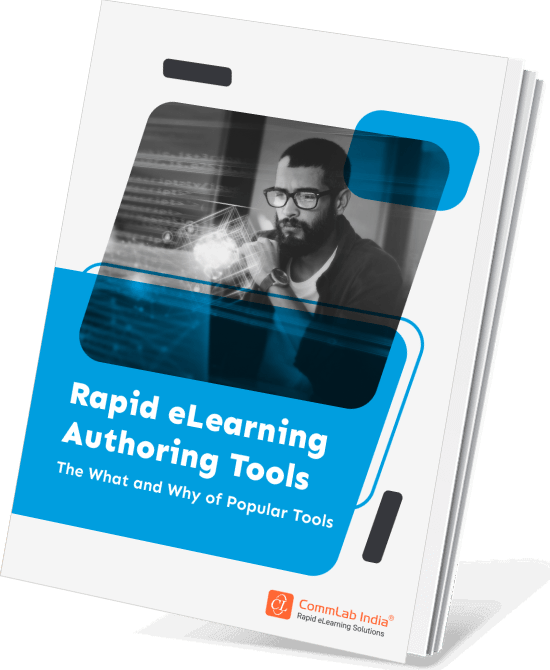
Rapid eLearning Authoring Tools
Explore the What and the Why of Popular Rapid eLearning Development Tools, and GenAI Tools
- Categories of eLearning Authoring Tools
- Considerations to Choose Your Next Authoring Tool
- Features of Popular Rapid Authoring Tools
- GenAI Tools to Create Content, Graphics, Audio, and Video
4. Accessibility and Compliance
- Lectora’s accessibility-first approach includes:
- A built-in Accessibility Checker aligned with WCAG 2.2
- Enhanced keyboard navigation and ARIA-label support
- Customizable closed captions and audio control
- Inclusive design options for menus, checkboxes, and scrollable text blocks
Whether you're building microlearning, simulations, or full compliance modules, Lectora equips your team to do it better and faster.
.png?width=900&height=484&name=Lectora%20for%20eLearning%20Course%20Development%20(2).png)
What are the Latest Updates of Lectora?
What makes Lectora effective in solving low learner engagement challenges?
Here is how Lectora helps you design interactive courses that truly engage learners
- Branching Scenarios
- Gamification Elements
- Responsive Course Design
- Accessible Interactions
Lectora evolves with the needs of today’s L&D teams. Recent releases have introduced adaptive triggers, enhanced video integration to support video-based learning, advanced accessibility features, streamlined SSO support, and SaaS-based delivery. Each update improves development speed, course stability, and learner experience.
May 2025 – Version 22.2.0
- On Variable Change trigger introduced for real-time, adaptive content behavior
- Fixes for image and SCORM survey rendering issues for stable output
March 2025 – Version 22.1.0
- Vimeo integration with direct URL embedding
- Smarter, fully accessible menus with customizable status text
- Enhancements to closed captions, checkboxes, and screen reader navigation
October 2024 – Version 22.0.1
- Azure SSO login issue resolved, improving enterprise integration
- Chrome's deprecated Unload event replaced with Pagehide for consistent SCORM tracking
- Studio Portal enhanced for both SSO and standard login workflows
August 2024 – Version 22.0.0
- Transitioned Lectora Desktop to a SaaS delivery model ensuring continuous feature access
- New PowerPoint import engine eliminates formatting errors and speeds up conversions
- HTML publishing optimized for security and browser compatibility (Edge support, PII removal)
- Expanded accessibility capabilities: improved ARIA-labels, list structure, and animation behavior

What are the Benefits of Lectora?
Lectora simplifies eLearning development with modular templates and supports real-time content personalization through adaptive triggers. These capabilities empower L&D teams to deliver engaging, scalable learning experiences with greater speed and precision.
Here are all the benefits Lectora brings to enterprise eLearning:
1. Modular development
Speed up course creation using pre-built wireframes, branded templates, and reusable content blocks that maintain consistency across teams and training programs.
2. Adaptive interactivity
Enhance learner engagement with intelligent logic that adjusts content in real time, using triggers and variables no advanced coding required.
According to PwC’s 2024 research, 62% of employees say learning opportunities directly influence their decision to stay or leave a company, highlighting how personalization and adaptive content can drive retention and engagement at scale.
3. Built-in accessibility
Create inclusive learning experiences that meet WCAG 2.2 standards out of the box, including screen reader support, keyboard navigation, and customizable captions.
4. Bespoke course design
Go beyond templates with full creative freedom to build high-impact, custom eLearning aligned with your organization's culture, tone, and strategic objectives.
With CommLab India, you get the freedom to create high-impact learning experiences that align with your brand and drive performance.
5. Enterprise scalability
Design once, deploy everywhere. Publish SCORM, AICC, or xAPI courses across multiple LMS platforms, departments, and global locations with consistent quality.
6. IT-friendly deployment
Reduce tech bottlenecks with secure SFTP publishing, Azure SSO integration, and a SaaS delivery model that keeps your authoring environment always up to date without IT involvement.
7. Visual and multimedia control
Build polished, professional courses using features like Vimeo video embedding, SVG support, object alignment guides, and seamless PowerPoint import.
8. Data-driven learning outcomes
Leverage xAPI tracking, assessments, and branching logic to design learning that’s not only engaging but measurable, personalized, and aligned with performance KPIs.

What are the Best Practices to Maximize Results with Lectora?
Lectora offers a robust set of technical and accessibility features that go beyond surface-level authoring. To maximize results, enterprise L&D teams can adopt these best practices that unlock its full potential:
1. Use Object Naming Strategically for Clean Development
Assign clear, consistent names to all objects and groups in the project explorer. This not only keeps large courses organized but also improves accessibility labeling and simplifies scripting and action management.
2. Configure Custom Tab Order for Keyboard Navigation
Don’t rely on default tab order, use Lectora’s custom tabbing features to define the most logical and user-friendly path through interactive elements. This is especially important in technical training, where clarity and accessibility are crucial for learners using keyboard-only navigation or assistive technologies.
3. Utilize Publish Strings for Accessible Status Text
Take advantage of the ability to configure status indicator text in the Publish Strings section. This helps screen readers communicate context (e.g., “Page Completed,” “Visited,” “Incomplete”) more clearly, especially in menu and navigation elements.
4. Apply Frame Descriptions for Better Screen Reader Interpretation
Lectora allows short, descriptive phrases to be added to frame elements. Use this to help screen reader users understand the layout and purpose of each section, critical when multiple layers or pop-ups are used.
Watch what makes Lectora the best authoring tool for modern eLearning
5. Structure Assessments for Assistive Tech Compatibility
Design quizzes with multi-response checkboxes that are screen-reader friendly and support adaptive learning paths. Avoid grouping radio buttons or checkboxes improperly and always label feedback clearly to ensure ARIA compliance and personalized learner experiences.
6. Incorporate ALT Text That Reflects Context
Rather than generic descriptions, use alt text that conveys the instructional relevance of the image. For example, "Chemical hazard symbol - corrosive" instead of "warning icon." This improves both compliance and learner comprehension.
7. Avoid JavaScript-Dependent Navigation for Accessibility
While Lectora supports JavaScript, rely on built-in actions and conditions wherever possible for critical navigation. This ensures the course functions correctly even when assistive technologies interact with the content.
8. Use 'Seamless Play' Mode Wisely
When enabled, Seamless Play improves learner experience by eliminating screen reloads. However, if accessibility is a priority, evaluate whether turning it off improves screen reader consistency in your course structure.
The Bottom Line for L&D Teams
Selecting the right authoring tool isn’t just a technical choice, it’s a strategic move that affects how quickly and effectively your team can deliver business-critical learning. With the rapid evolution of learner expectations, accessibility standards, and delivery platforms, today’s tools must offer more than just functionality they must offer scale, speed, and long-term value.
CommLab India helps L&D teams navigate these decisions with clarity and confidence, backed by deep expertise in authoring tools, instructional design, and rapid development.
Download the free eBook to explore key factors that matter when choosing the right rapid authoring tool for your organization.

